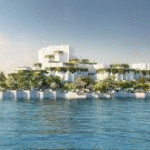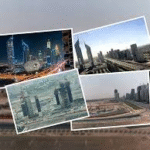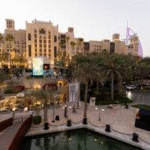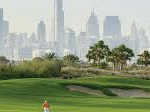Now Reading: 7 Compelling Factors Fueling Ultra-Luxury Demand in 2025
-
01
7 Compelling Factors Fueling Ultra-Luxury Demand in 2025
7 Compelling Factors Fueling Ultra-Luxury Demand in 2025
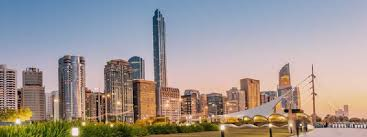
Table of Contents
Fueling Ultra-Luxury Demand: The UAE’s luxury real estate market, valued at USD 15.83 billion in 2025 with a projected CAGR of 7.7% to USD 22.94 billion by 2030, is experiencing unprecedented demand for ultra-luxury properties, per Mordor Intelligence. Despite a 15% price correction due to a supply surge of 182,000–210,000 units, per Fitch Ratings, high-net-worth individuals (HNWIs) and ultra-high-net-worth individuals (UHNWIs) drive a 40% price surge in prime areas like Palm Jumeirah and Emirates Hills, per EIN Presswire.
With 948 luxury transactions above AED 15 million ($4.08 million) in 2024, per DAMAC Properties, the UAE outpaces global hubs like London and New York. This guide, crafted in clear, SEO-friendly language with an engaging tone, outlines seven compelling factors fueling ultra-luxury demand in 2025, supported by data, legal insights, and risk analysis, aligning with the Dubai 2040 Urban Master Plan and UAE’s economic vision.
7 Compelling Factors Fueling Ultra-Luxury Demand
1. Global Wealth Migration and Safe-Haven Status
Dubai’s stable political and economic landscape, coupled with its reputation as a safe investment haven, attracts HNWIs from Europe, Asia, and the Americas, per Fast Company ME. Post-pandemic wealth preservation and geopolitical uncertainties drive demand for ultra-luxury villas priced at AED 60–120 million ($16.34–$32.67 million), per posts on X.
- Why It Drives Demand: UAE’s tax-free environment and business-friendly policies draw billionaires, per Swank Development.
- Investor Action: Invest in AED 20 million ($5.45 million) Palm Jumeirah villas for 6-8% yields, per Kaizen AMS.
- Example: A $16.34 million Jumeirah Bay mansion yields $1.14 million annually, appreciating to $19.61 million by 2028, a $3.27 million gain.
- Source: Fast Company ME, Kaizen AMS
2. Golden Visa and Residency Incentives
The UAE’s Golden Visa, offering 10-year residency for AED 2 million ($544,518) property investments, saw a 25% application surge in 2024, per Dubai Land Department (DLD). Ultra-luxury properties in Saadiyat Island and Dubai Marina easily qualify, boosting demand, per AYS Developers.
- Why It Drives Demand: Long-term residency appeals to HNWIs seeking stability, per Economy Middle East.
- Investor Action: Purchase AED 15 million ($4.08 million) Emirates Hills villas for visa eligibility and 6-7% yields, per Property Finder.
- Example: A $4.08 million villa yields $285,600 annually, appreciating to $4.9 million by 2028, a $820,000 gain.
- Source: DLD, AYS Developers
3. Tax-Free Returns and High Yields
The UAE’s absence of capital gains, income, or property taxes enhances ROI, offering 5-9% gross yields compared to 2-3% in global markets, per Property Finder. Ultra-luxury properties in Downtown Dubai and Palm Jumeirah deliver 6-8% yields, per DAMAC Properties.
- Why It Drives Demand: Tax-free returns maximize profits for HNWIs, per The Luxe Developers.
- Investor Action: Invest in AED 27.5 million ($7.48 million) Atlantis The Royal Residences for tax-free 6-8% yields, per Savills.
- Example: A $7.48 million residence yields $523,600 annually, appreciating to $8.98 million by 2028, a $1.5 million gain.
- Source: DAMAC Properties, Property Finder
4. Branded Residences and Exclusivity
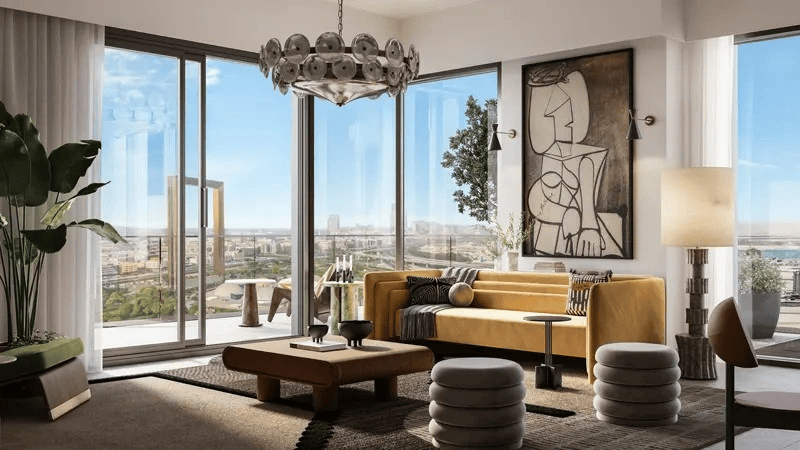
With nearly 140 branded residence projects, including DAMAC Bay 1 by Cavalli and Armani Beach Residences, Dubai leads globally in ultra-luxury branded living, per DAMAC Properties. These properties, starting at AED 15 million ($4.08 million), offer prestige and 6-8% yields, per AYS Developers.
- Why It Drives Demand: HNWIs value exclusivity and premium amenities like private beaches and spas, per The Luxury Playbook.
- Investor Action: Buy AED 16.5 million ($4.49 million) Cavalli Couture units, listing for short-term rentals, per DubaiPalmIsland.net.
- Example: A $4.49 million residence yields $314,300 annually, appreciating to $5.39 million by 2028, a $900,000 gain.
- Source: DAMAC Properties, AYS Developers
5. Tourism Boom and Short-Term Rental Surge
The UAE welcomed 18.7 million tourists in 2024, with a projected 20 million in 2025, driving an 18% surge in short-term rental demand, per Economy Middle East. Ultra-luxury villas in Palm Jumeirah and Saadiyat Island achieve 85% occupancy and 6-8% yields, per Driven Properties.
- Why It Drives Demand: Tourism fuels high rental returns in tourist-heavy areas, per AYS Developers.
- Investor Action: List AED 10 million ($2.72 million) Bluewaters Island villas on Airbnb with DTCM licenses (AED 1,500/$408 annually).
- Example: A $2.72 million villa yields $190,400 annually, appreciating to $3.26 million by 2028, a $540,000 gain.
- Source: Economy Middle East, Driven Properties
6. Sustainability and Wellness-Focused Properties
By 2025, 35% of UAE real estate sales will involve LEED-certified properties, up from 15% in 2020, per AYS Developers. Ultra-luxury projects like Six Senses Palm Villas integrate solar panels and wellness amenities, appealing to 88% of HNWIs prioritizing green spaces, per Knight Frank.
- Why It Drives Demand: Eco-conscious HNWIs seek sustainable luxury, per Swank Development.
- Investor Action: Invest in AED 12 million ($3.27 million) Emaar Oasis villas with energy-efficient designs, per Emaar Properties.
- Example: A $3.27 million villa yields $228,900 annually, appreciating to $3.92 million by 2028, a $650,000 gain.
- Source: Knight Frank, AYS Developers
7. Strategic Location and Infrastructure

The UAE’s East-West connectivity, with areas like Palm Jumeirah and Downtown Dubai near major airports and metro lines, attracts HNWIs, per Fast Company ME. Developments like Al Maktoum Airport enhance accessibility, driving 10-15% villa price growth, per Property Gulf Blog.
- Why It Drives Demand: World-class infrastructure supports luxury lifestyles, per The Luxe Developers.
- Investor Action: Buy AED 62 million ($16.87 million) Frond G mansions for proximity to Nakheel Mall, per Robb Report.
- Example: A $16.87 million mansion yields $1.18 million annually, appreciating to $20.24 million by 2028, a $3.37 million gain.
- Source: Property Gulf Blog, Fast Company ME
Legal and Tax Framework
- UAE Legal Framework:
- Property Ownership: 100% foreign ownership in freehold zones (e.g., Palm Jumeirah, Saadiyat Island), per Law No. 7 of 2006.
- Corporate Tax: 9% on taxable income above AED 375,000 ($102,103), 0% for QFZPs in DMCC/DIFC. File by September 30, 2025, per FTA.
- VAT: 5% on commercial transactions, exempt for residential. Register if supplies exceed AED 375,000 by March 31, 2025.
- AML: KYC mandatory for transactions above AED 100,000, per Federal Law No. 20 of 2018. Penalties: AED 5 million ($1.36 million).
- Fees: 4% DLD transfer fee (split), AED 540-4,200 registration.
- Off-Plan Laws: Law No. 8 of 2007 mandates escrow accounts; Law No. 13 of 2008 regulates strata properties.
- U.S. Tax Framework:
- Reporting: Declare income via Forms 1040, 1116, Schedule E under FATCA. Income taxed at 10-37%, capital gains at 0-20%.
- Foreign Tax Credit (FTC): Offset UAE corporate tax against U.S. liability.
- FEIE: $130,800 exclusion for earned income, not rentals.
- Golden Visa: AED 2 million ($544,518) investments qualify for 10-year residency.
Risks and Mitigation
- Oversupply: 182,000–210,000 units by 2026 may deepen corrections, per S&P Global. Focus on ultra-luxury zones like Palm Jumeirah, per Kaizen AMS.
- Geopolitical Risks: Regional tensions may deter investors. UAE’s safe-haven status mitigates impact, per Unique Properties.
- Developer Delays: 40% of off-plan projects face delays, per William Blair. Choose developers like Emaar, Nakheel, and DAMAC, verifying escrow with DLD.
- U.S. Tax Burden: IRS reporting reduces returns. Maximize FTC with tax advisors.
- Maintenance Costs: High service charges (AED 10-20/sq.ft.) impact yields, per DubaiHousing-ae.com. Budget 5-10% of rental income.
Step-by-Step Guide for U.S. Investors
- Research Ultra-Luxury Trends: Target Palm Jumeirah, Emirates Hills, and Saadiyat Island for 6-8% yields and 10-15% appreciation by 2028, per ValuStrat.
- Set Budget: Allocate $2.72–$16.87 million, or $2 million for Golden Visa eligibility.
- Verify Developers: Confirm Emaar, Nakheel, or DAMAC’s escrow compliance with DLD.
- Secure Financing: Obtain 75% LTV mortgages at sub-4% rates from UAE banks, per Seven Luxury Real Estate, budgeting 4% DLD fees.
- Execute Purchase: Sign SPAs, ensuring RERA registration and escrow accounts.
- Ensure Compliance: Register for UAE VAT/corporate tax by March 31, 2025, if commercial supplies exceed $102,103, and U.S. taxes by April 18, 2025, with FTC. Complete AML/KYC.
- Lease Strategically: List properties for short-term rentals, targeting 85% occupancy, per Driven Properties, and reinvest 6-8% yields.
Conclusion
The UAE’s ultra-luxury real estate market in 2025, valued at USD 15.83 billion, is a global powerhouse driven by wealth migration, Golden Visa incentives, tax-free returns, branded residences, tourism, sustainability, and strategic infrastructure. With 6-8% yields and 10-15% appreciation in prime areas like Palm Jumeirah and Saadiyat Island, HNWIs find unmatched opportunities, per Mordor Intelligence.
By leveraging reputable developers like Emaar, ensuring DLD and RERA compliance, and mitigating risks like oversupply, U.S. investors can capitalize on the UAE’s resilient market, supported by the Dubai 2040 Urban Master Plan, for long-term gains. watch more
read more: 8 Bold Reasons Investors Love Palm Jumeirah Now











